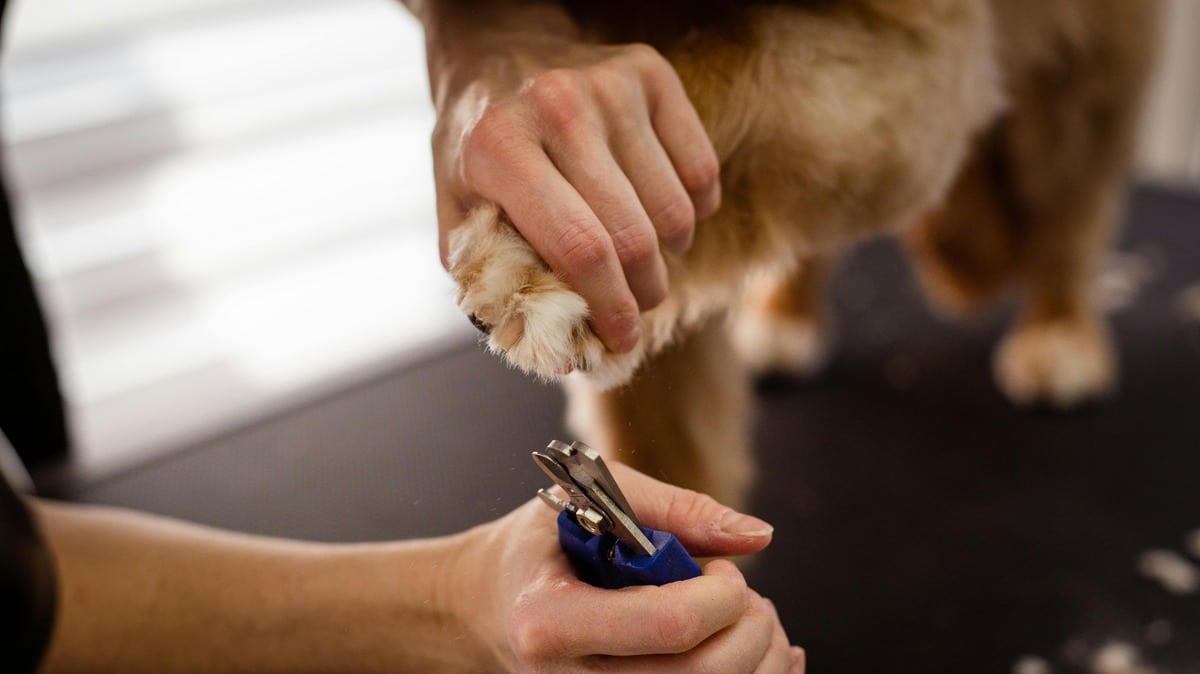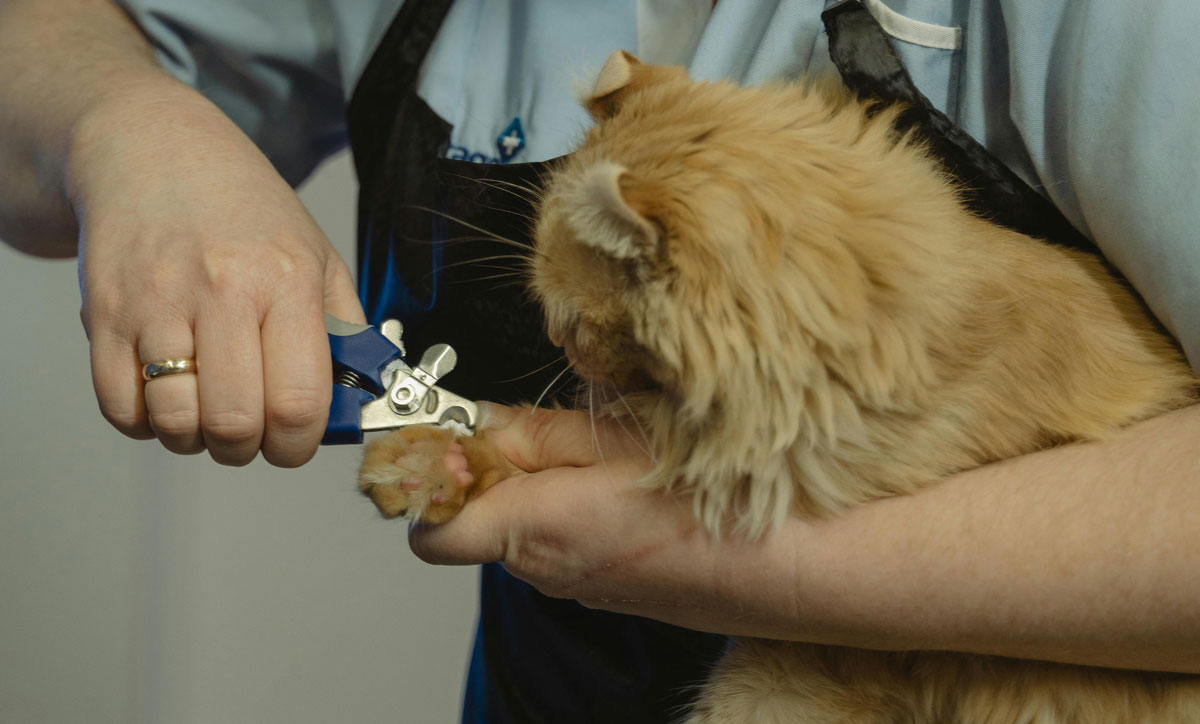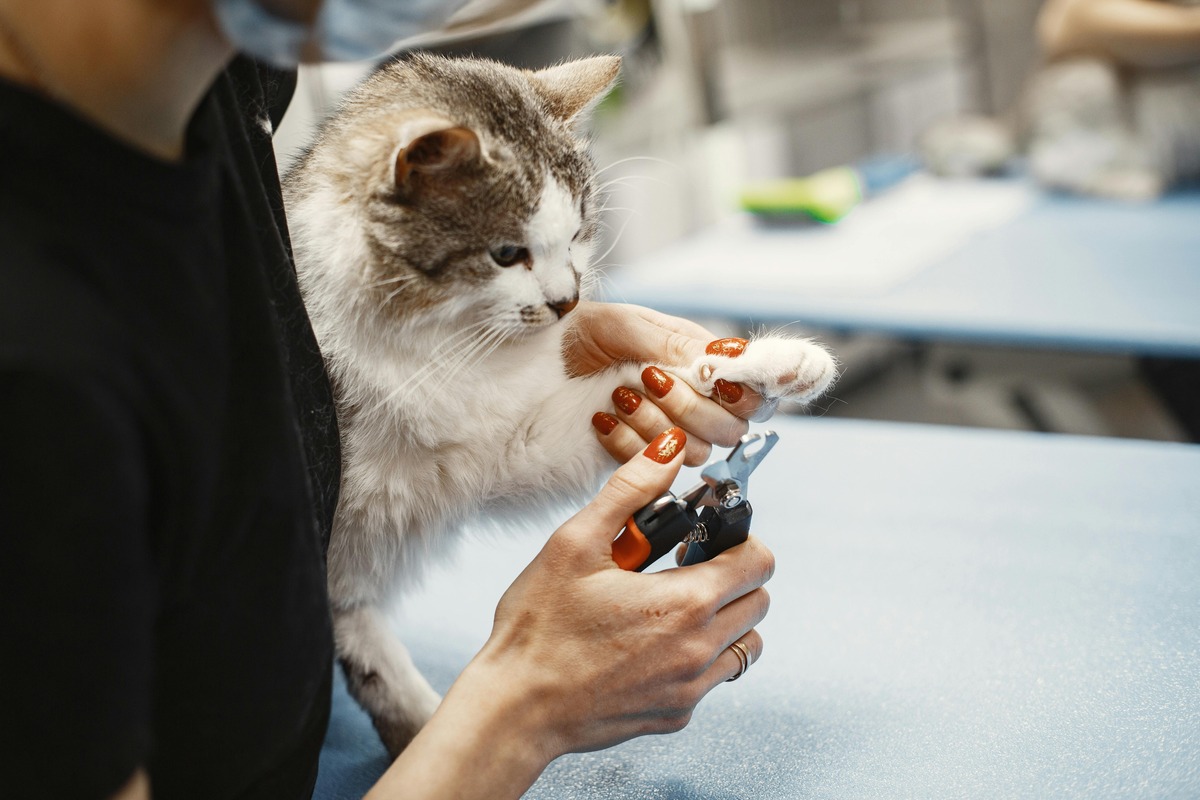
How to Trim Your Pet’s Nails Without Hurting Them
Keeping your pet’s nails trimmed is an essential part of their overall health, well-being, and hygiene routine. Overgrown nails can cause discomfort, lead to posture issues, and even result in injuries. However, many pet owners are hesitant to trim their pet’s nails for fear of causing pain or injury. Hesitating can lead to neglect. This neglect causes long, painful nails. These nails can make movement hard and lead to other health issues.
In this comprehensive guide, we’ll explore the safest techniques for dog nail care and cat claw trimming guide. It will help you confidently trim your pet’s nails without stress. We’ll also discuss the anatomy of pet nails, recommended tools, step-by-step trimming techniques, and expert tips. These tips will make the process smoother for both you and your pet.
Why Nail Trimming is Important
Prevents Discomfort and Pain
Long nails can put pressure on your pet’s toes, leading to discomfort and difficulty walking. In extreme cases, they can even curl into the paw pads, causing painful wounds and infections.
Reduces the Risk of Injuries
Long nails can break, split, or snag on carpets and furniture. This can hurt and lead to infections. They can also raise the risk of joint issues. Your pet might change how they walk to ease the pain.
Protects Your Floors and Furniture
Well-trimmed nails prevent scratches on hardwood floors, sofas, and other household items. Sharp claws can also tear upholstery and carpets, leading to costly repairs.
Improves Posture and Mobility
Long nails make pets walk differently. This can lead to joint problems and bad posture. Regular trimming ensures that your pet maintains proper foot placement and overall mobility.
Understanding Pet Nail Anatomy
The Quick and How to Avoid It
The quick is the pink part inside the nail that contains blood vessels and nerves. Cutting into the quick can cause bleeding and pain, so it’s essential to trim carefully. The quick grows longer if nails are not trimmed regularly. That makes it harder to maintain short nails. If your pet’s nails have grown too long, you may need to trim them gradually over multiple sessions.
Differences Between Dog and Cat Nails
- Dog nails tend to be thicker and may require a nail grinder for smoothing. They often have a prominent quick, making precise trimming crucial.
- Cat claws are retractable and should be trimmed to prevent damage from scratching. Cats may require more frequent trims, as their claws grow quickly and can become sharp.
Tools You Need for Safe Nail Trimming for Pets

Nail Clippers
- Guillotine Clippers: Best for small to medium-sized pets.
- Scissor Clippers: Ideal for larger dogs with thick nails.
- Electric Nail Grinders: Useful for smoothing edges and reducing sharpness. It is especially useful for pets who dislike clippers.
Styptic Powder or Pencil
Essential for stopping bleeding if you accidentally cut the quick. Cornstarch or baking soda can also be used as a substitute.
A Nail File or Dremel Tool
Helps smooth out rough edges after trimming, reducing the risk of scratches.
Step-by-Step Guide to Trimming Your Pet’s Nails
1. Prepare Your Pet and the Environment
- Choose a calm, quiet area where your pet feels safe.
- Have treats ready to reward good behaviour.
- If your pet is nervous, let them sniff and get used to the clippers before starting.
- Consider using a non-slip mat for extra stability.
2. Hold the Paw Firmly but Gently
- Press gently on your pet’s paw pad to extend the nails.
- Ensure your pet is relaxed before proceeding. Massaging the paw beforehand can help reduce anxiety.
3. Identify the Quick and Trim Small Sections
- For light-coloured nails, the quick is visible as a pinkish area inside the nail.
- For dark nails, trim gradually until you see a dark, circular area at the centre of the nail, indicating the start of the quick.
- If unsure, trim just a small amount at a time.
4. Use a Steady Hand to Make Clean Cuts
- Trim at a 45-degree angle to follow the natural shape of the nail.
- Avoid cutting too close to the quick.
- If using a grinder, move in smooth, even motions to avoid overheating.
5. Reward Your Pet After Each Nail
- Use positive reinforcement, like treats and praise, to encourage cooperation.
- Take breaks if your pet gets anxious to prevent making the experience stressful.
6. Smooth the Edges
- Use a nail file or grinder to remove rough edges.
- Check for any sharp points that could cause scratching.
7. Observe Your Pet’s Comfort After Trimming
- Watch for any signs of discomfort or limping.
- If your pet seems in pain, check for any missed sharp edges or signs of over-trimming.
How Often Should You Trim Your Pet’s Nails?

General Guidelines
- Dogs: Every 3-4 weeks, depending on activity level and nail growth.
- Cats: Every 2-3 weeks, especially for indoor cats who don’t naturally wear down their claws.
- Older pets: May require more frequent trimming, as their nails tend to grow faster and become more brittle.
Common Mistakes to Avoid
Cutting Too Much at Once
Trim in small sections to avoid hitting the quick. If your pet’s nails are too long, gradually shorten them over several trimming sessions.
Using Dull Clippers
Dull blades can crush rather than cut nails, causing discomfort and splintering. Always keep clippers sharp and replace them when needed.
Ignoring Anxiety Signs
If your pet is too stressed, take breaks. You can try gradual conditioning over multiple sessions. Holding their paw without trimming at first can help them get used to the process.
Not Checking for Ingrown Nails
Some pets, especially those with curled nails, are prone to ingrown nails that dig into the paw pads. Regular trimming helps prevent this painful issue.
Additional Tips for Stress-Free Nail Trimming
Gradual Desensitisation
- Start by handling your pet’s paws without trimming.
- Introduce the clippers slowly and let your pet sniff them.
- Reward your pet even if you don’t trim the nails, reinforcing a positive experience.
Use a Calming Approach
- Speak softly to your pet throughout the process.
- Groom after playtime when your pet is tired and more relaxed.
- If necessary, consider using a pheromone spray to create a soothing environment.
Consider Professional Grooming
- If your pet strongly resists nail trimming, a professional groomer or vet can help.
- Some pets may require sedation for trimming, especially if they have severe anxiety.
Trim Your Pet’s Nails with Ease
Trimming your pet’s nails doesn’t have to be a stressful experience. With the right tools, technique, and patience, you can safely trim your pet’s nails. Trimming keeps them comfortable and healthy. Regular trimming prevents injuries, improves mobility, and enhances your pet’s quality of life.
By trimming your pet’s nails safely, you avoid pain and make grooming a good experience for them. Establishing a routine will make nail care easier over time, leading to a happier, healthier pet.